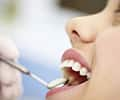What is the Occusal Surface?
The surfaces and edges of your teeth go by different names. As the National Examining Board for Dental Nurses points out, there are nine different tooth surfaces, two of which are essential to chewing: the incisal surface and the occlusal surface. The incisal surface is the biting edge on the canines and incisors, near the front of your mouth, while the occlusal is the biting edge, or the top of, your molars and premolars.
Given that the occlusal surfaces play a big role in your everyday life, you're more likely to see wear and tear on them. Understanding how wear develops on the surface and what you can do to treat it will help you keep your teeth in great shape.
What Causes Wear on the Occlusal Surface?
Wear on the chewing surface of the molars and premolars can develop for a variety of reasons. In some cases, wear and damage are a result of cavities. A paper published in the journal Caries Research suggests that the occlusal surface of the molars is the site most likely to develop cavities, and that those cavities are most likely to develop at a young age, around the time the molars erupt, rather than later in life.
A condition known as bruxism can lead to wear on the molars' and premolars' chewing surfaces. People who have bruxism grind their teeth together or clench their teeth, often in their sleep. The wear and tear on the teeth related to bruxism can lead to pain in the teeth and facial area, cracks or chips in the teeth, and problems with the jaw. While people who grind their teeth might not be aware that they're doing it, a dentist can easily spot signs of the condition and recommend a treatment.
In some cases, wear on the chewing surface can simply be a result of the aging process. Wear on the teeth caused by chewing or physical contact between the teeth is known as attrition. Years of eating, speaking and otherwise using your mouth and teeth can cause wear on the surface. Although you can't avoid getting older, you can talk to your dentist about your options for protecting your teeth as you age.
Treating and Protecting the Occlusal Surface
Your teeth are meant to be used, so it might be impossible to avoid attrition and wear to the chewing surface entirely. But there are ways to protect your teeth to keep them from becoming severely worn or damaged. When placed on the teeth soon after they erupt, sealants protect the surface, keeping food and bacteria from getting stuck on the teeth. They typically last for about 10 years and can be reapplied throughout your life to protect your teeth from decay.
If bruxism is leading to wear on the occlusal surface of your teeth, your dentist may recommend a night guard. A night guard protects your teeth while you sleep, because the barrier stops the surfaces of your top and bottom molars from coming in contact. You may also want to look into relaxation techniques to ease tension and strain in your jaw, and prevent teeth clenching.
If you already have a considerable amount of wear on the chewing surfaces of your molars or premolars, you might need a crown to replace the worn or damaged tooth. Brushing your teeth with a toothpaste that helps strengthen and restore your enamel can help protect your teeth from future wear. Brushing your teeth regularly, at least twice a day, will also protect your molars and other teeth from cavities.
Oral Care Center articles are reviewed by an oral health medical professional. This information is for educational purposes only. This content is not intended to be a substitute for professional medical advice, diagnosis or treatment. Always seek the advice of your dentist, physician or other qualified healthcare provider.
ORAL HEALTH QUIZ
What's behind your smile?
Take our Oral Health assessment to get the most from your oral care routine
ORAL HEALTH QUIZ
What's behind your smile?
Take our Oral Health assessment to get the most from your oral care routine
Join Us
Get the best of your oral health routine and take it to the next level with expert advice, recommendations, products and solutions and special offers.
Join Us
Get the best of your oral health routine and take it to the next level with expert advice, recommendations, products and solutions and special offers.















